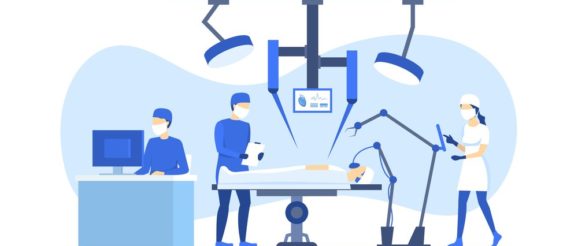The patent power struggle in surgical robotics – Med-Tech Innovation | Latest news for the medical device industry

Guy Edwards, patent attorney at IP firm GJE, assesses the patent landscape in the surgical robotics sector.
Not everyone who works in the field of intellectual property understands how important it can be in terms of influencing a market. Nor do they realise how important it is to take into consideration business and strategic goals when deciding how to engage with the intellectual property system. One technical field that gives us a good example of this is surgical robots.
Over the past year or so the British and international press have repeatedly published David and Goliath stories about how a “plucky” British company, CMR Surgical, is seeking to disrupt the robotic surgery market. In operating rooms across the world surgeons and doctors are increasingly turning to robots to perform minimally invasive operations which offer fewer complications and quicker recovery times to patients.
The Goliath in this sector is Intuitive Surgical and their da Vinci system. The da Vinci system has dominated the surgical robotics market practically uncontested since its launch in 1999/2000. The da Vinci system has over 5,300 systems installed worldwide, including in more than 70 UK hospitals, and supports revenues of over $3 billion dollars annually for Intuitive Surgical.
One of the building blocks for this stranglehold on the market was Intuitive Surgical’s patent portfolio. Following a merger with their chief rival, Computer Motion, in 2003, Intuitive has owned powerful patents which allowed them to exclude all other players from the surgical robotics market.
However, patents have a maximum term of 20 years, and the protection provided by Intuitive’s original patent portfolio has started to expire. Although the initial patents allowed Intuitive Surgical a colossal head start over their competition, new companies such as CMR Surgical are now starting to enter the space.
It should be appreciated that this arrival of new entrants is central to one of the key concepts of the patent system. The goal of the patent system is to encourage innovation with a quid pro quo – a patent entitles you to a monopoly on the use of your invention for up to 20 years during which time you may build your business free from competition, but once this time has passed the technology is free for anyone to use.
Nevertheless, this idealistic view of the patent system provides little reassurance for Intuitive Surgical or other patent proprietors approaching the end of their patent terms. Indeed, with the surgical robotics market expected to grow to $24 billion by 2025, according to Global Markets Insight, Intuitive Surgical have clear incentives to defend their market position.
Indeed, to maintain control of the industry Intuitive Surgical has sought to extend patent protection for their products by filing further patent applications to developments and innovation of their da Vinci systems. For instance, a search of online patent databases shows that Intuitive Surgical has filed and had published nearly four times as many patent families in the last five years than in the five years between 2004 and 2009.
Filing fresh patent applications directed to new developments or uses of existing technology as the original patents for the technology expire forms a key part of a strategy patent professionals term “evergreening”. By filing new patent applications or swallowing up smaller competitors for their intellectual property, companies are able to extend their control over the market well past the original 20-year patent term.
Although evergreening is most commonly seen in the pharmaceutical industry – where the exclusivity and royalties offered by patent protection are extremely lucrative – Intuitive Surgical is demonstrating is that the approach can be applied equally well in the medical technology sector and beyond.
How successful Intuitive Surgical’s efforts to maintain its monopoly remains to be seen. However, this brief assessment of their situation demonstrates how powerful patent protection can be in developing businesses in new and emerging fields, and the value that all companies must place on continued innovation and IP protection regardless of their position in the market.
